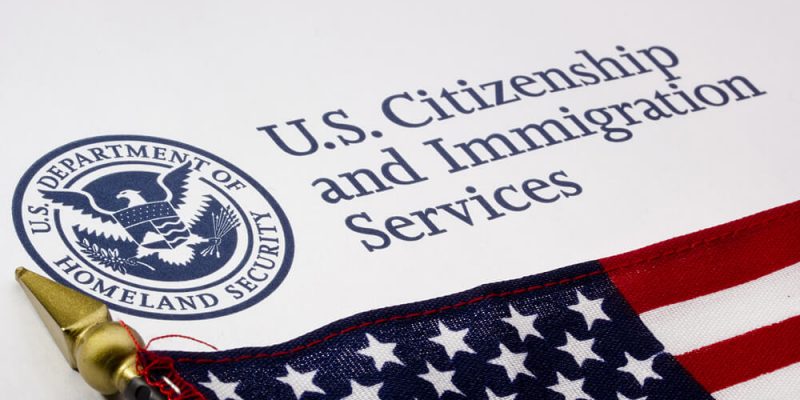United States Citizenship and Immigration Services (USCIS) organized a public engagement via teleconference on March 13, 2020, to discuss the new visa availability I-526 processing approach and answer questions about it from the public.
Sarah Kendall, chief of the Immigrant Investor Program Office (IPO), and Charles Oppenheim, chief of the Visa Control and Reporting Division from the Department of State, were featured as the event’s speakers. The agenda included a discussion about the switch to the visa availability processing approach from the first-in-first-out approach and provided information on the EB-5 Modernization Rule. The question-and-answer session at the end of the engagement offered a lot of valuable insights.
Why Did USCIS Switch to the New Approach?
The purpose of the switch to the visa availability approach is to make processing for EB-5 visas more consistent with that of other visa programs. Additionally, the new approach will help allocate visas in a manner that is more in line with what Congress had intended for the program. Per Kendall, I-526 petitions from countries for which EB-5 visas are immediately available or soon to be available will be prioritized.
The new approach went into effect on March 31, 2020. It applies to all I-526 petitions that were unassigned as of March 31, 2020, including pending I-526 petitions, and most I-526 petitions received after March 31, 2020. It does not affect investors who have already received a request for evidence (RFE) or notice of intent to deny (NOID).
Who Will Be Most Affected by the Change?
The IPO will use the Chart B Dates for Filing dates in the U.S. Department of State’s monthly Visa Bulletin. I-526 petitions from EB-5 investors who are deemed ineligible to apply for a visa that month will not be assigned for adjudication.
Based on this information, only investors from Mainland China will be negatively affected. China is the only country that does not have a “current” Date for Filing. In contrast, the new approach may benefit Indian and Vietnamese investors, who would have had a longer wait time if the IPO used Chart A for its assignment decisions. However, this may not remain true in the long term, as the number of I-526 petitions filed by Indian and Vietnamese investors exceeds the annual country caps for visas.
The visa availability approach does not provide guidance on which I-526 petitions will be adjudicated, only on which ones will not be. Therefore, EB-5 investors should not expect that petitions from underrepresented countries will be processed immediately now that the new approach is in place. It is unclear as of yet which country’s EB-5 investors will benefit the most from the visa availability approach.
Are There Exceptions to the New Approach?
USCIS intend to abide strictly by the EB-5 visa availability process. However, there are two exceptions to the new approach. The first exception applies to expedite requests, which USCIS will execute no matter what country the investor hails from. The second exception applies to EB-5 investors who are subject to longer wait times but have a spouse from an underrepresented country. Investors in such circumstances can file for an EB-5 visa under their spouse’s nationality if they email the IPO and explain the situation.
Will the Available Number of Visas Be Affected?
Kendall and Oppenheim noted that both the EB-5 quota and per-country limit would remain unchanged. Oppenheim did not believe that the number of leftover visas would change in the next 12 to 18 months.
How Will This Affect Processing Times?
The visa availability approach may very well reduce I-526 processing times, but whether it will remains to be seen. Kendall declined to talk about the current I-526 backlogs, noting that the IPO does not discuss those figures with the public. According to her, FY2019 saw such low processing numbers as a result of increased anti-fraud measures, and she stressed the significance of rigorous anti-fraud measures in the EB-5 program. Based on this information, it is unlikely that the processing volume will increase significantly in FY2020 after the unusually low numbers in FY2019.
Backlog for Indian Investors
USCIS announced during the public engagement that it expects the backlog for Indian EB-5 investors to disappear by the summer given the decrease in I-526 petitions filed by Indian investors. This decrease has resulted in the final action date for Indians in the monthly Visa Bulletin to move up considerably.
COVID-19
The EB-5 program has also felt the effects of the spread of COVID-19 across the globe. Most notably, the closing of the U.S. consulate in China has resulted in the final action and filing dates for Chinese EB-5 investors stagnating. Until the consulate in China reopens and Chinese investors are available to receive leftover visas again, the IPO plans assign any leftover visas to Vietnamese investors. No additional questions were asked about the impact of COVID-19.
Additional Information
- Kendall and Oppenheim declined to address questions related to travel ban countries and encouraged those affected email USCIS with their queries.
- USCIS has published a FAQ page related the EB-5 Modernization Rule.





